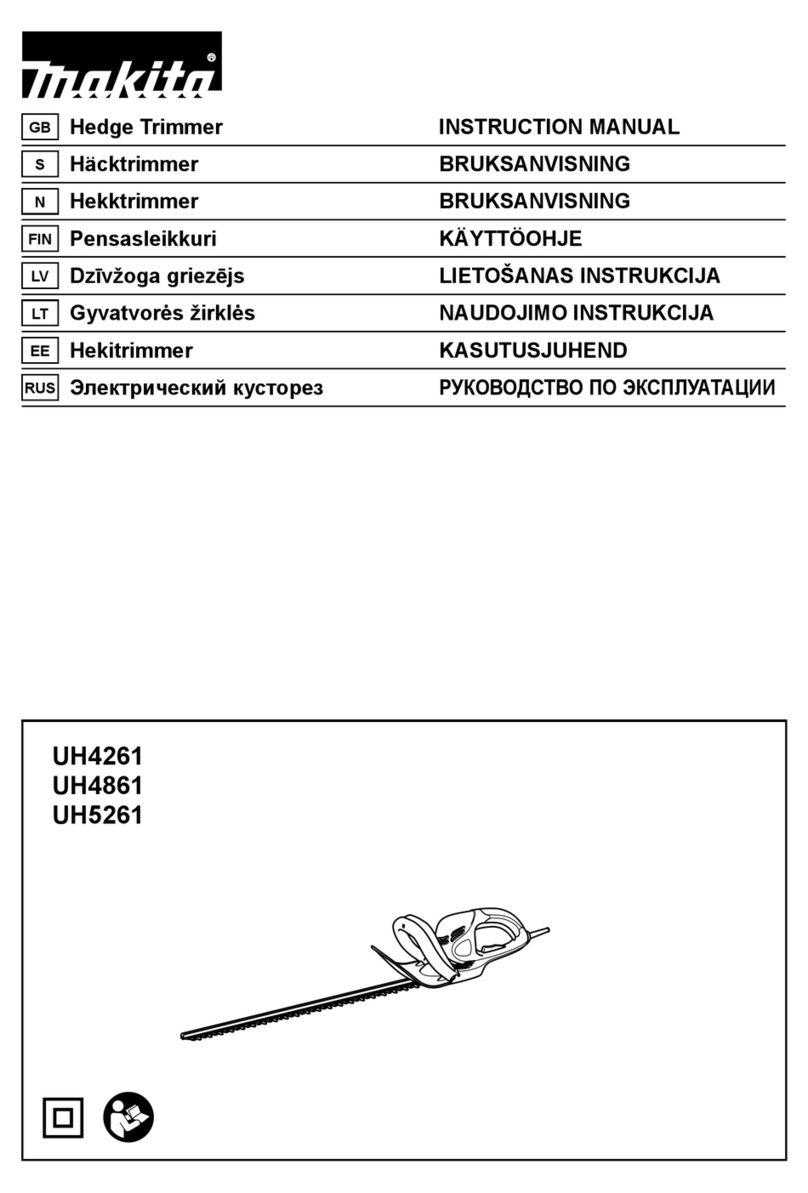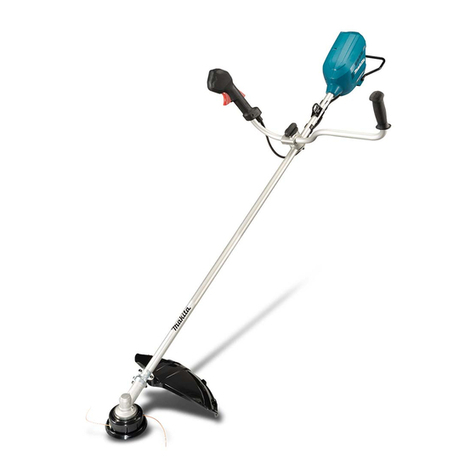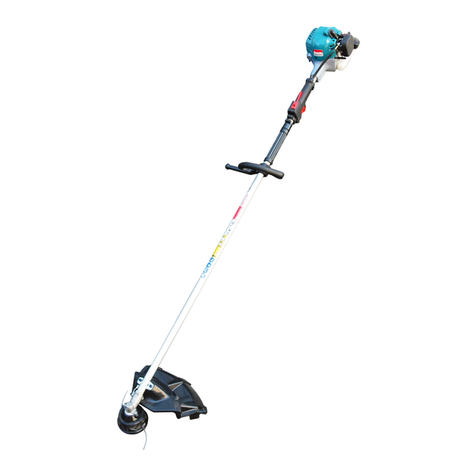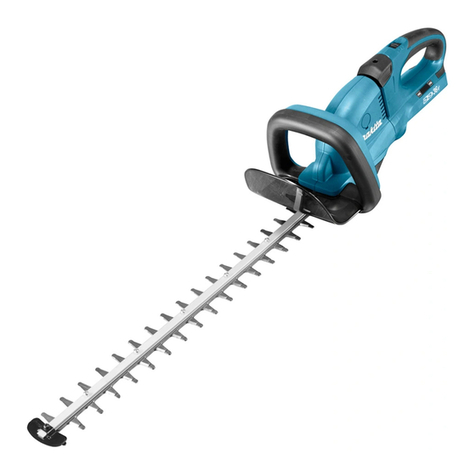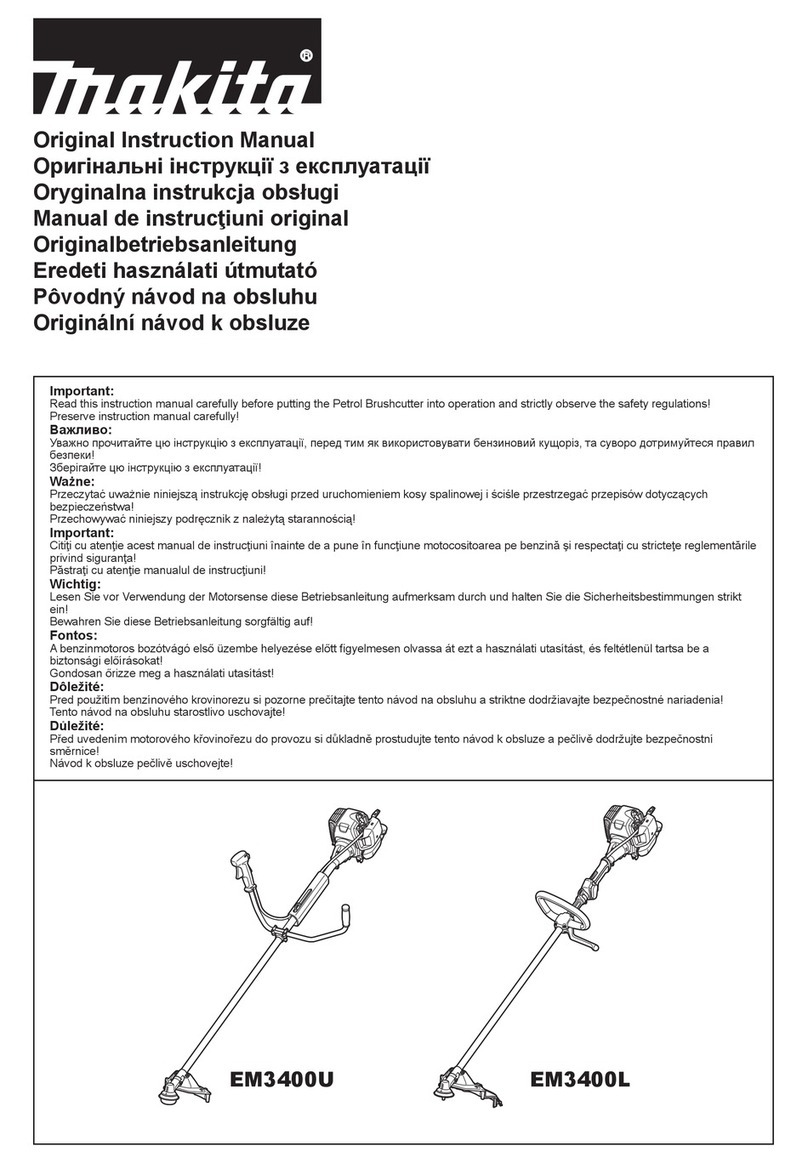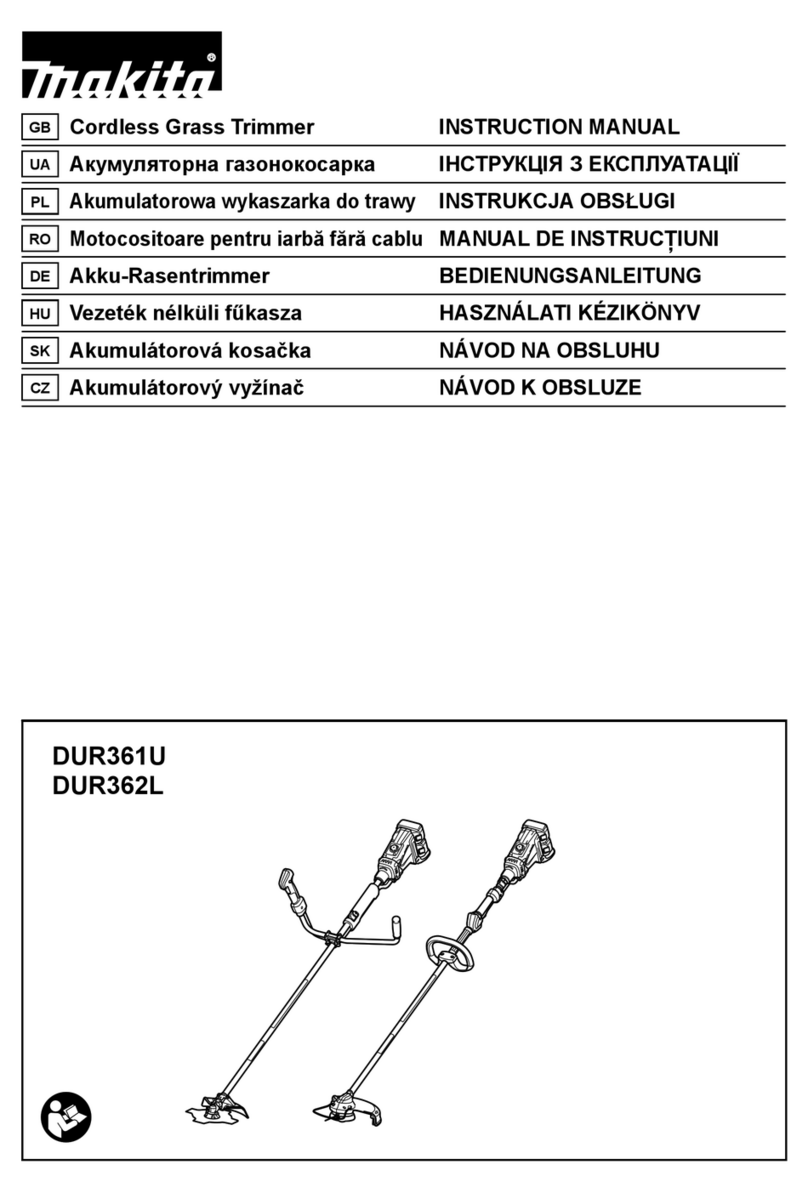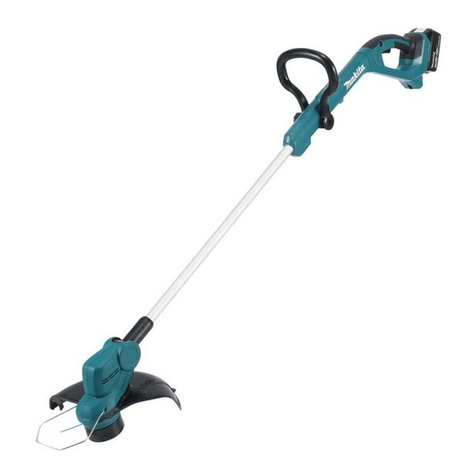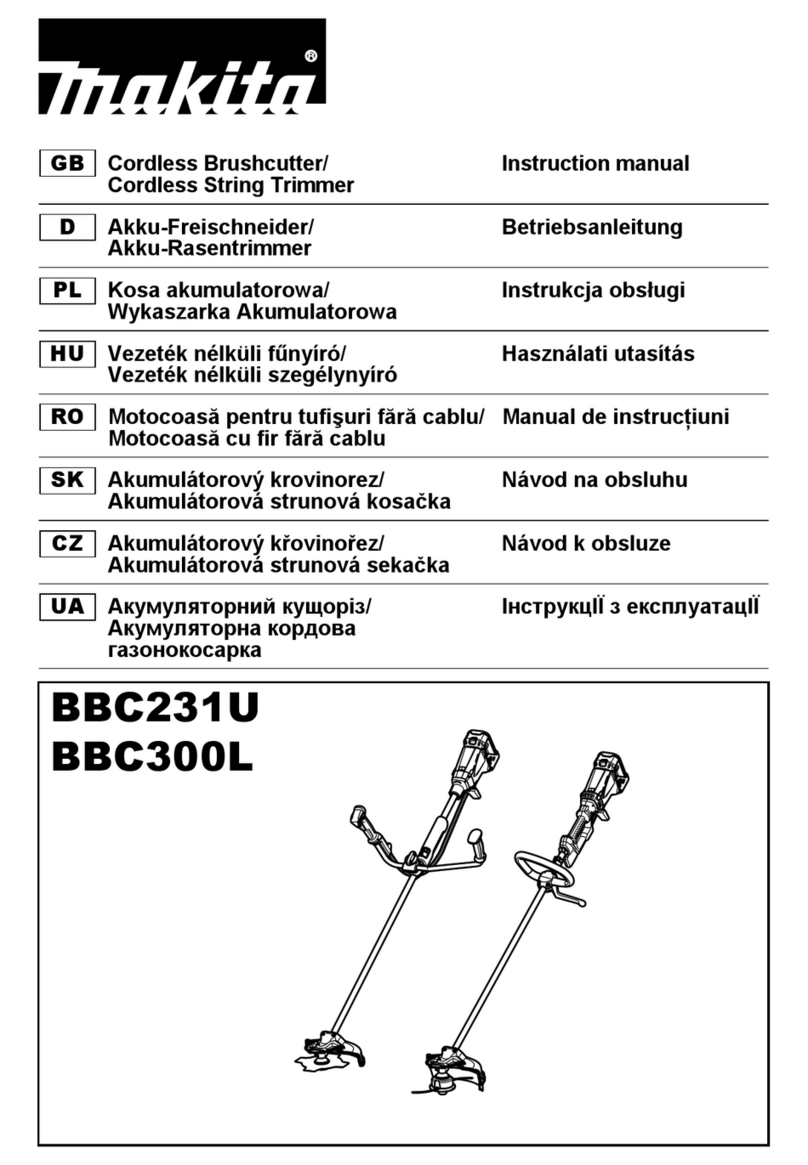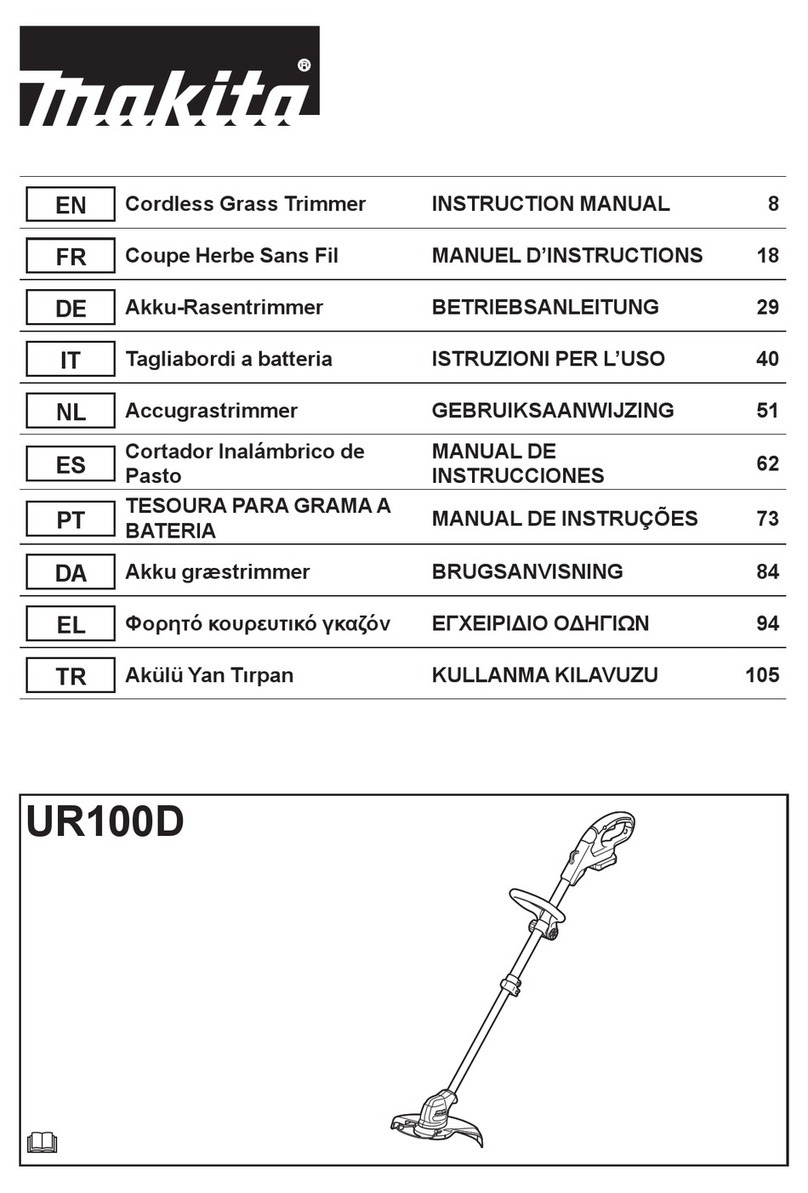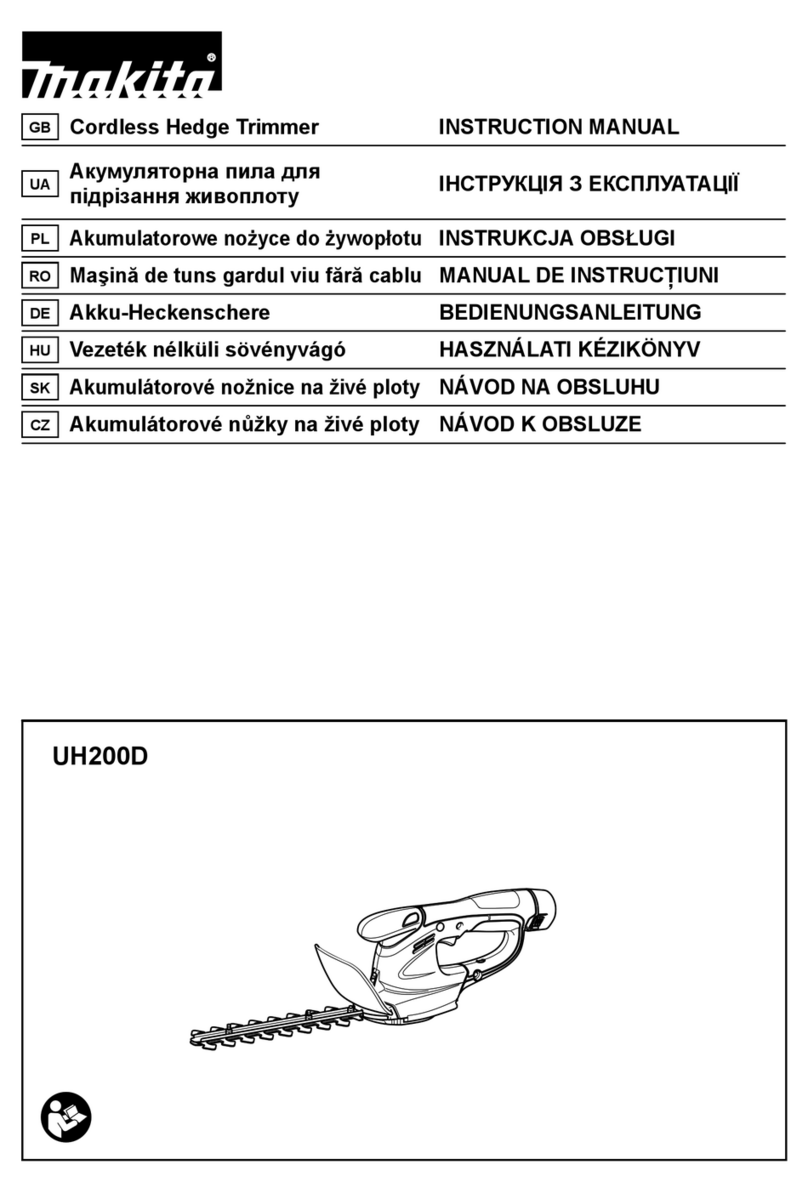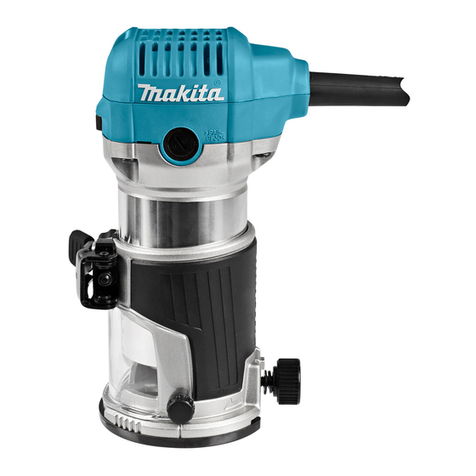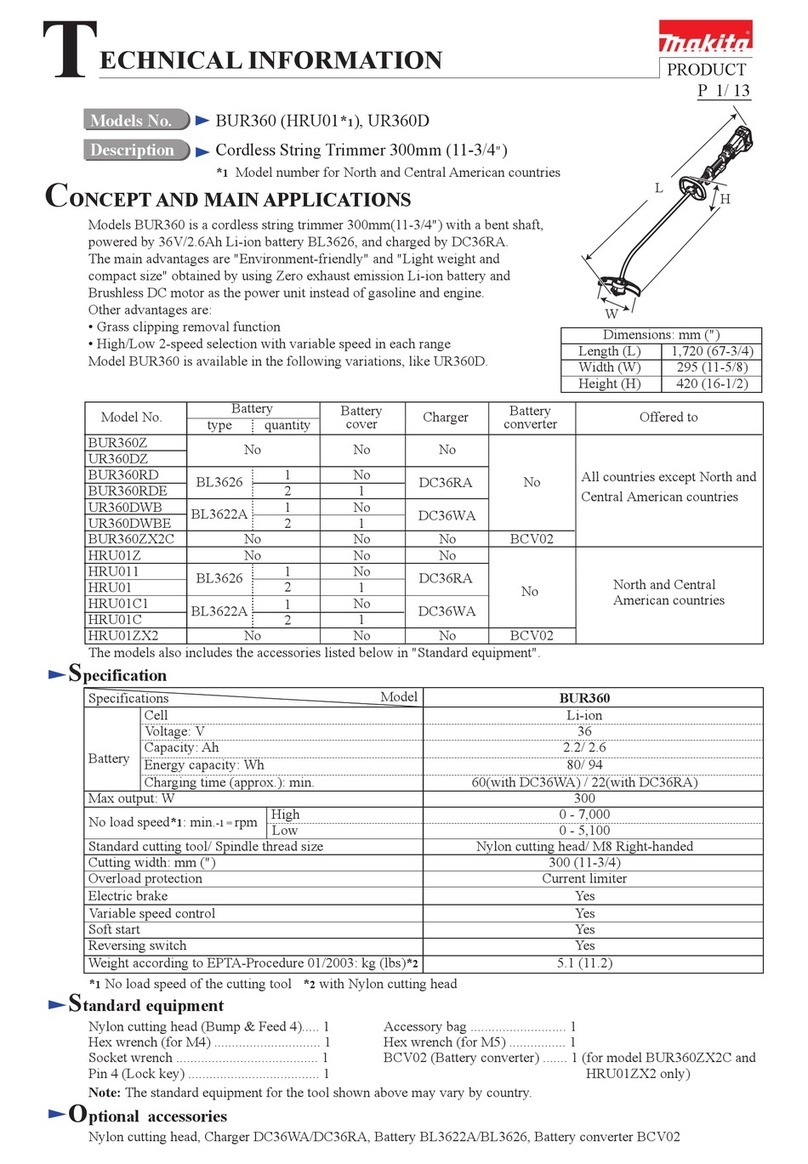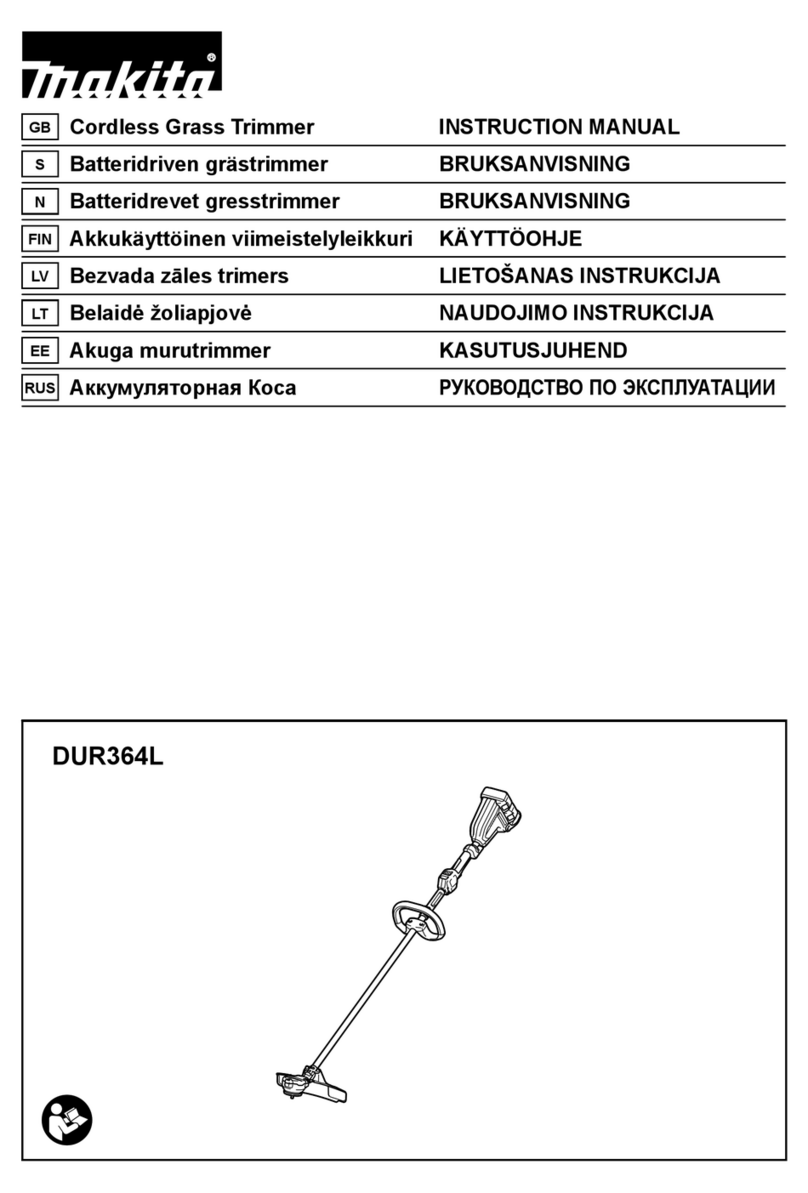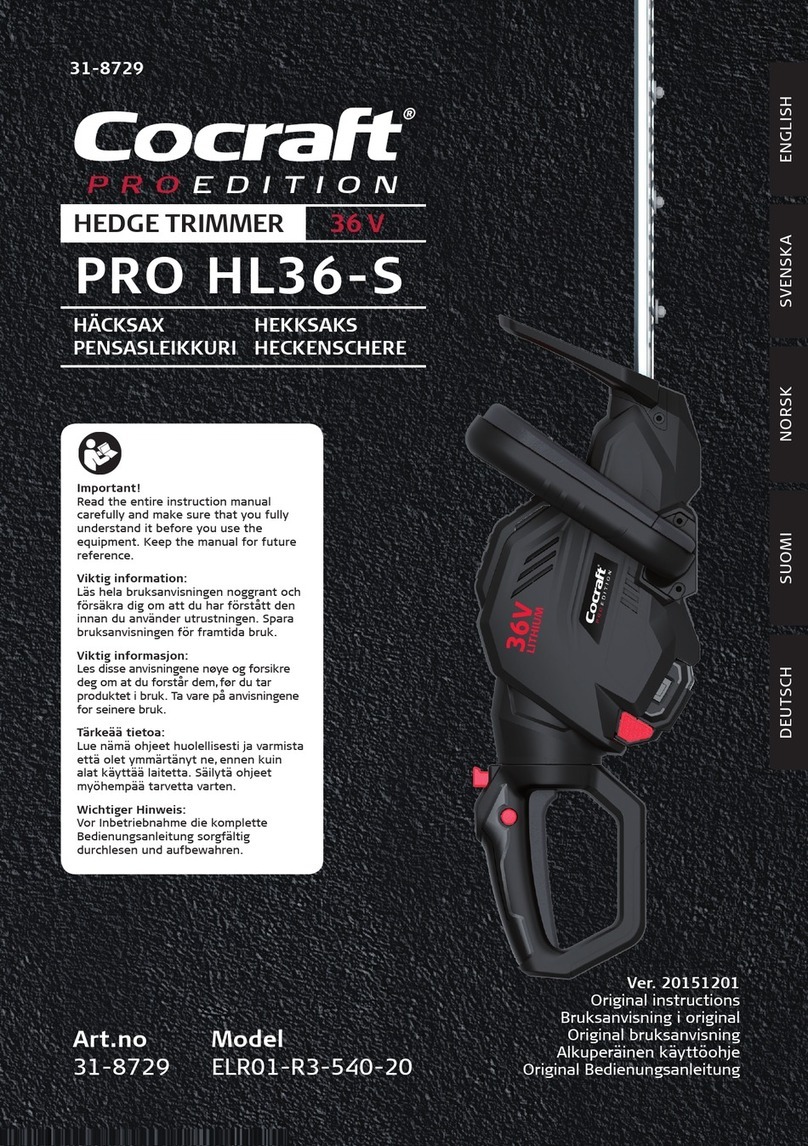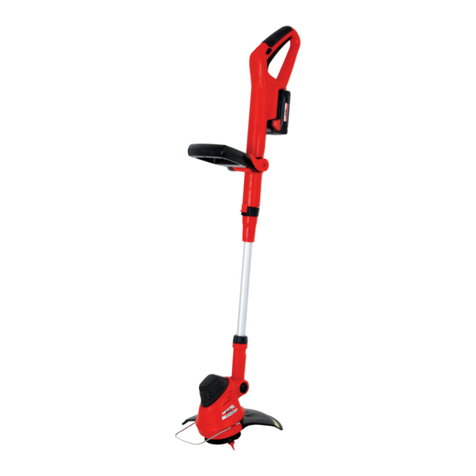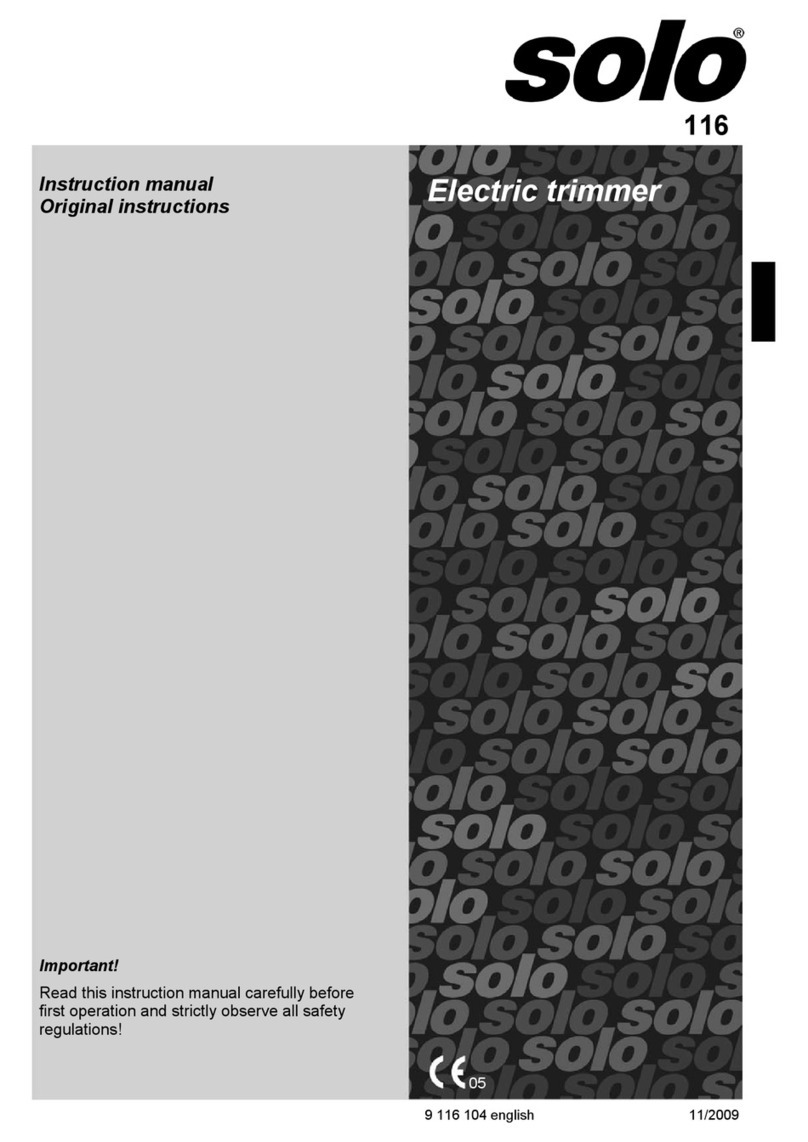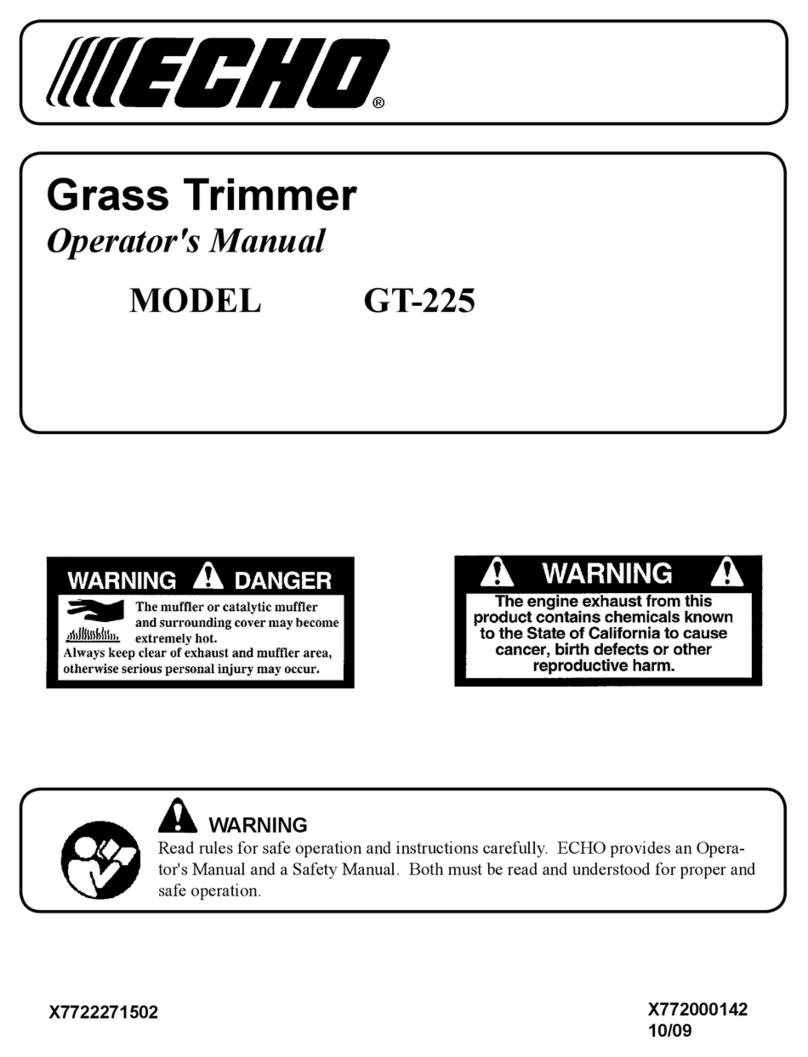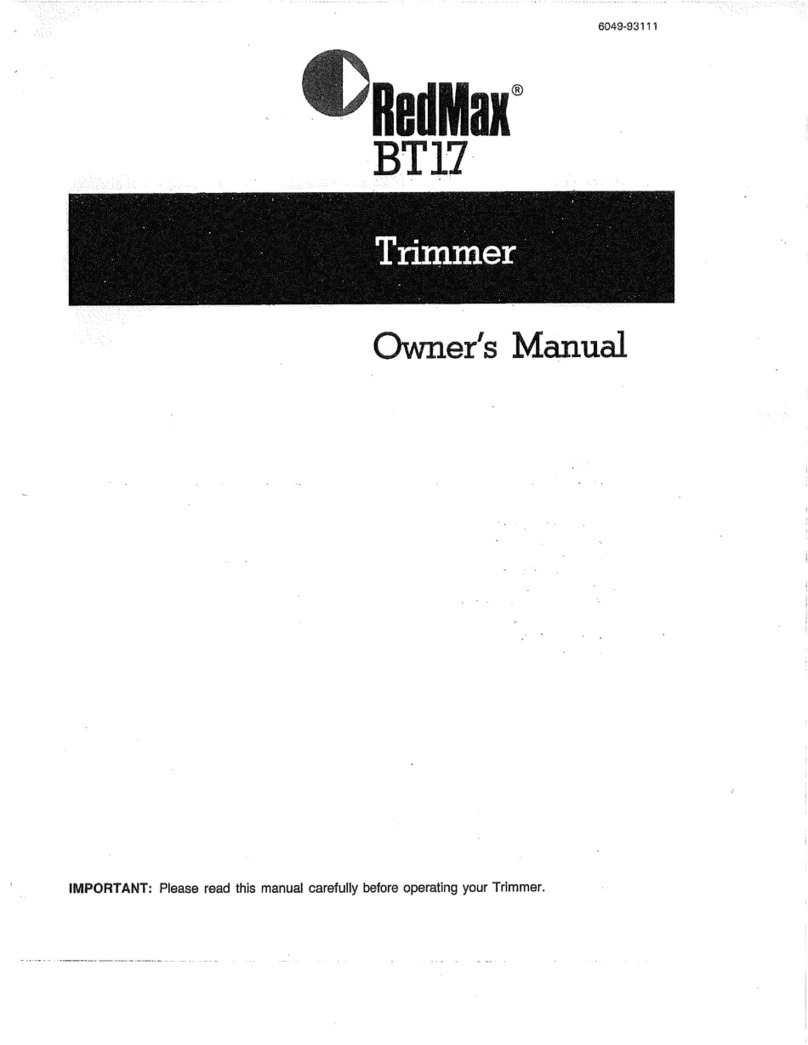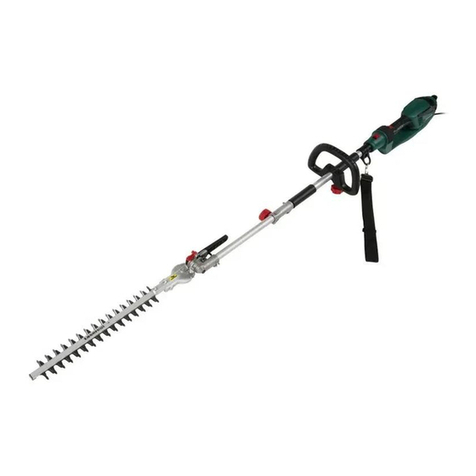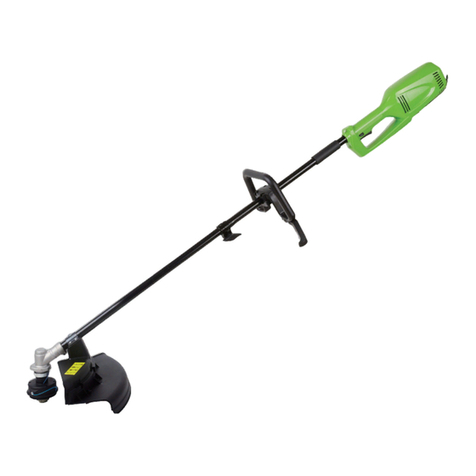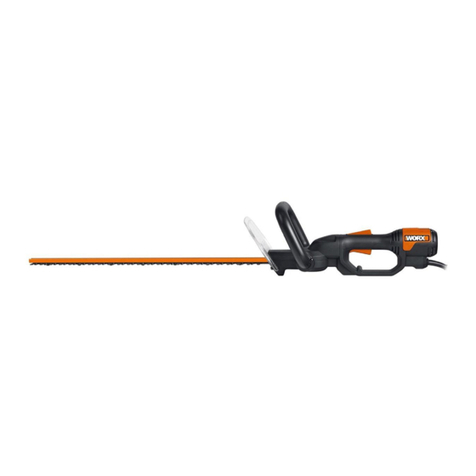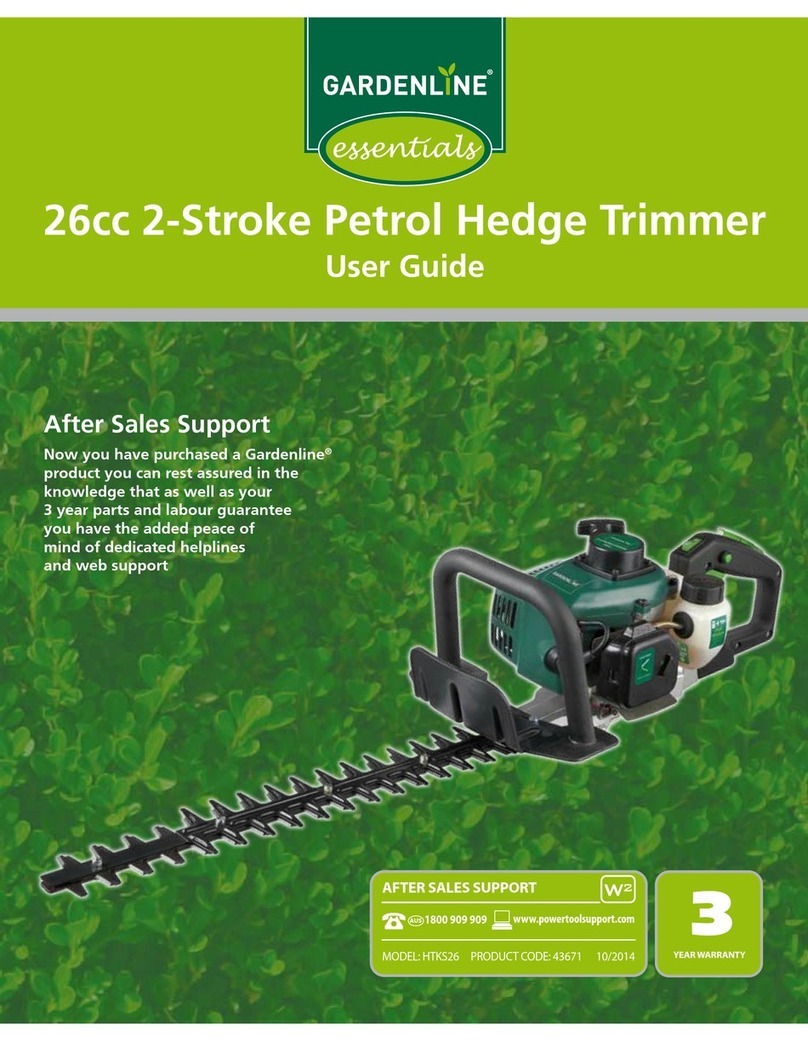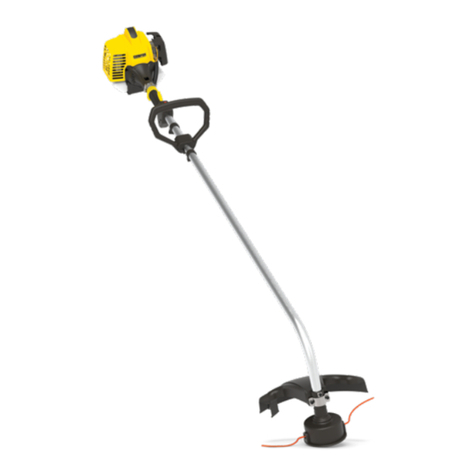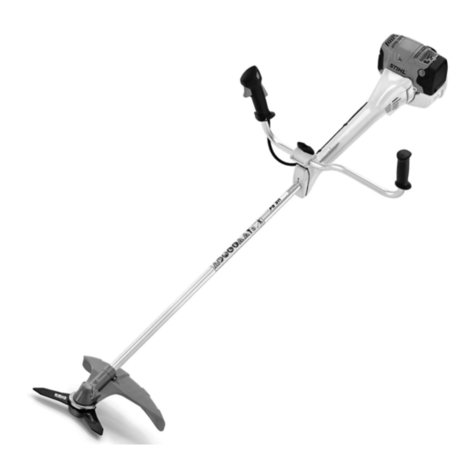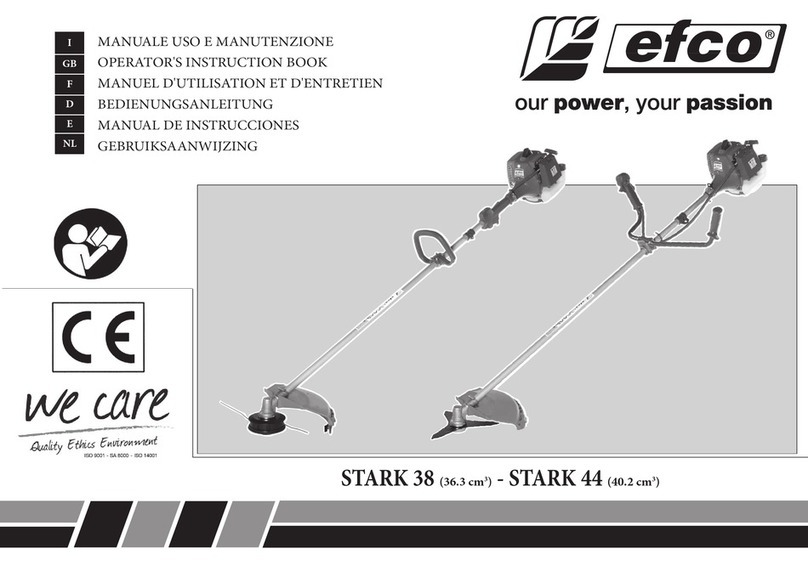9
carefully checked to determine that it will operate
properly and perform its intended function. Check for
alignment of moving parts, binding of moving parts,
breakage of parts, mounting, and any other condition
that may affect its operation. A guard or other part that
is damaged should be properly repaired or replaced
by our authorized service center unless indicated
elsewhere in this manual.
4. Switch on the motor only when hands and feet are
away from the cutting tool.
5. Before starting make sure that the cutting tool has no
contact with hard objects such as branches, stones
etc. as the cutting tool will revolve when starting.
Method of operation
1. Only use the tool in good light and visibility. During the
winter season beware of slippery or wet areas, ice and
snow (risk of slipping). Always ensure a safe footing.
2. Take care against injury to feet and hands from the
cutting tool.
3. Never cut above waist height.
4. Never stand on a ladder and run the tool.
5. Never climb up into trees to perform cutting operation
with the tool.
6. Never work on unstable surfaces.
7. Remove sand, stones, nails etc. found within the
working range. Foreign particles may damage the
cutting tool and can cause dangerous kick-backs.
8. Should the cutting tool hit stones or other hard objects,
immediately switch off the motor and inspect the
cutting tool.
9. Inspect the cutting blade at short regular intervals for
damage (detection of hairline cracks by means of
tapping-noise test).
10. Before commencing cutting, the cutting tool must have
reached full working speed.
11. Operate the tool only with the shoulder harness
attached which is to be suitably adjusted before
putting the tool into operation. It is essential to adjust
the shoulder harness according to the user size to
prevent fatigue occurring during use.
12. During operation always hold the tool with both hands.
Never hold the tool with one hand during use. Always
ensure a safe footing.
13. The cutting tool has to be equipped with the guard.
Never run the tool with damaged guards or without
guards in place!
14. All protective equipment such as guards and the
shoulder harness supplied with the tool must be used
during operation.
15. Never hit weeds or similar materials with the cutting
tool to cut them away.
16. Except in case of emergency, never drop or cast the
tool to the ground or this may severely damage the
tool.
17. Never drag the tool on the ground when moving from
place to place, the tool may become damaged if
moved in this manner.
18. Always remove the battery cartridge from the tool:
- whenever leaving the tool unattended;
- before clearing a blockage;
- before checking, cleaning or working on the tool;
- whenever the tool starts vibrating abnormally.
19. Always ensure that the ventilation openings are kept
clear of debris.
Kickback (blade thrust)
1. When operating the tool, uncontrolled kickback (blade
thrust) may occur. (Fig. 4)
2. This is particularly the case when attempting to cut
within a blade segment between 12 and 2 o’clock.
3. Never apply the tool within a segment between 12 and
2o’clock.
4. Never apply this segment of the cutter blade to solids,
such as bushes and trees, etc., having a diameter in
excess of 3 cm or the cutter blade will be deflected at
great force with the risk of injuries.
Kickback prevention
To avoid kickbacks, observe the following:
1. Operation within a blade segment between 12 and
2 o’clock presents positive hazards, especially when
using metal cutting tools. (Fig. 5)
2. Cutting operations within a blade segment between 11
and 12 o’clock, and between 2 and 5 o’clock, must
only be performed by trained and experienced
operators, and then only at their own risk.
3. Easy cutting with almost no kickback is possible within
a blade segment between 9 and 11 o’clock.
Cutting Tools
1. Employ only the correct cutting tool for the job in hand.
2. To cut thick materials, such as weed, high grass,
bushes, shrubs, underwood, thicket etc. (max. 2 cm
dia. thickness), perform the cutting work by swinging
the tool evenly in half-circles from right to left (similar
to using a scythe).
Maintenance instructions
1. The condition of the cutting tool, protective devices
and shoulder harness must be checked before
commencing work.
2. Particular attention is to be paid to the cutting blades
which must be correctly sharpened.
3. Turn off the motor and remove the battery cartridge
before carrying out maintenance, replacing the cutting
tool and cleaning the tool.
4. Check for loose fasteners and damaged parts such as
cracks in the cutting tool.
5. Follow instructions for lubricating the tool.
6. When not in use store the equipment in a dry location
that is locked up or out of children’s reach.
7. Use only the manufacturer’s recommended
replacement parts and accessories.
8. Inspect and maintain the tool regularly, especially
before/after use. Have the tool repaired only by our
authorized service center.
9. Keep handles dry, clean and free from oil and grease.
SAVE THESE INSTRUCTIONS.
WARNING:
DO NOT let comfort or familiarity with product (gained
from repeated use) replace strict adherence to safety
rules for the subject product. MISUSE or failure to
follow the safety rules stated in this instruction
manual may cause serious personal injury.
